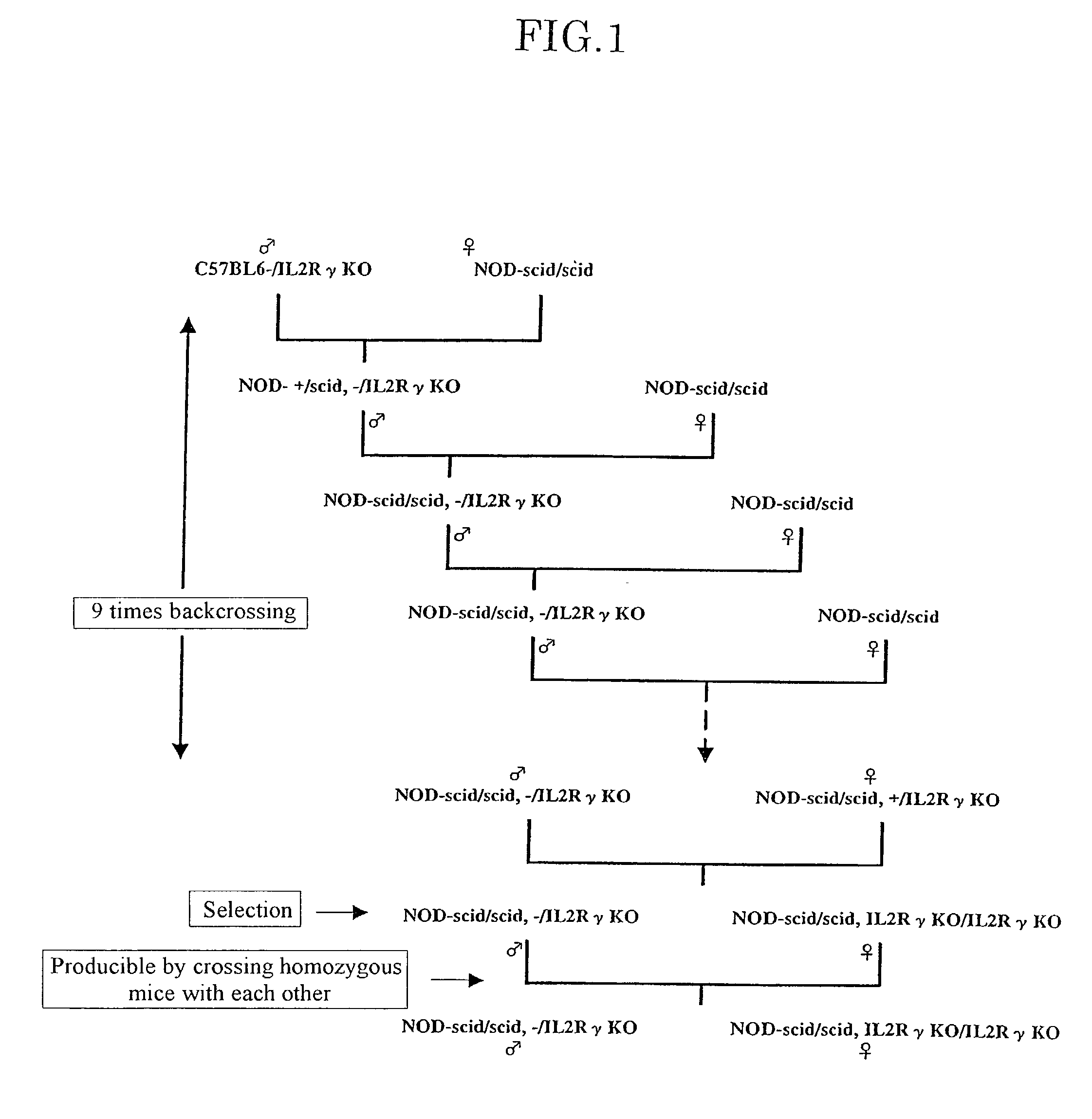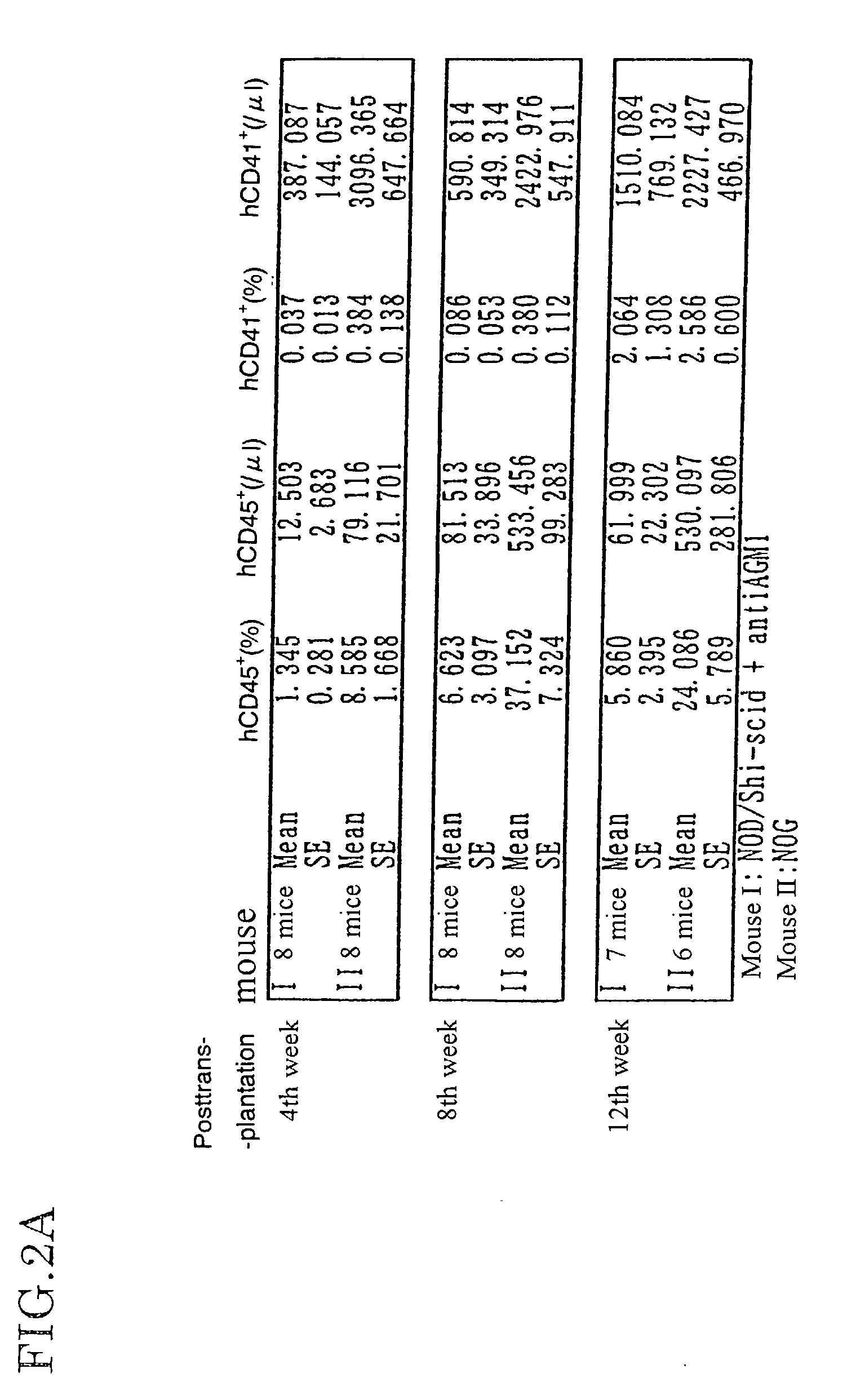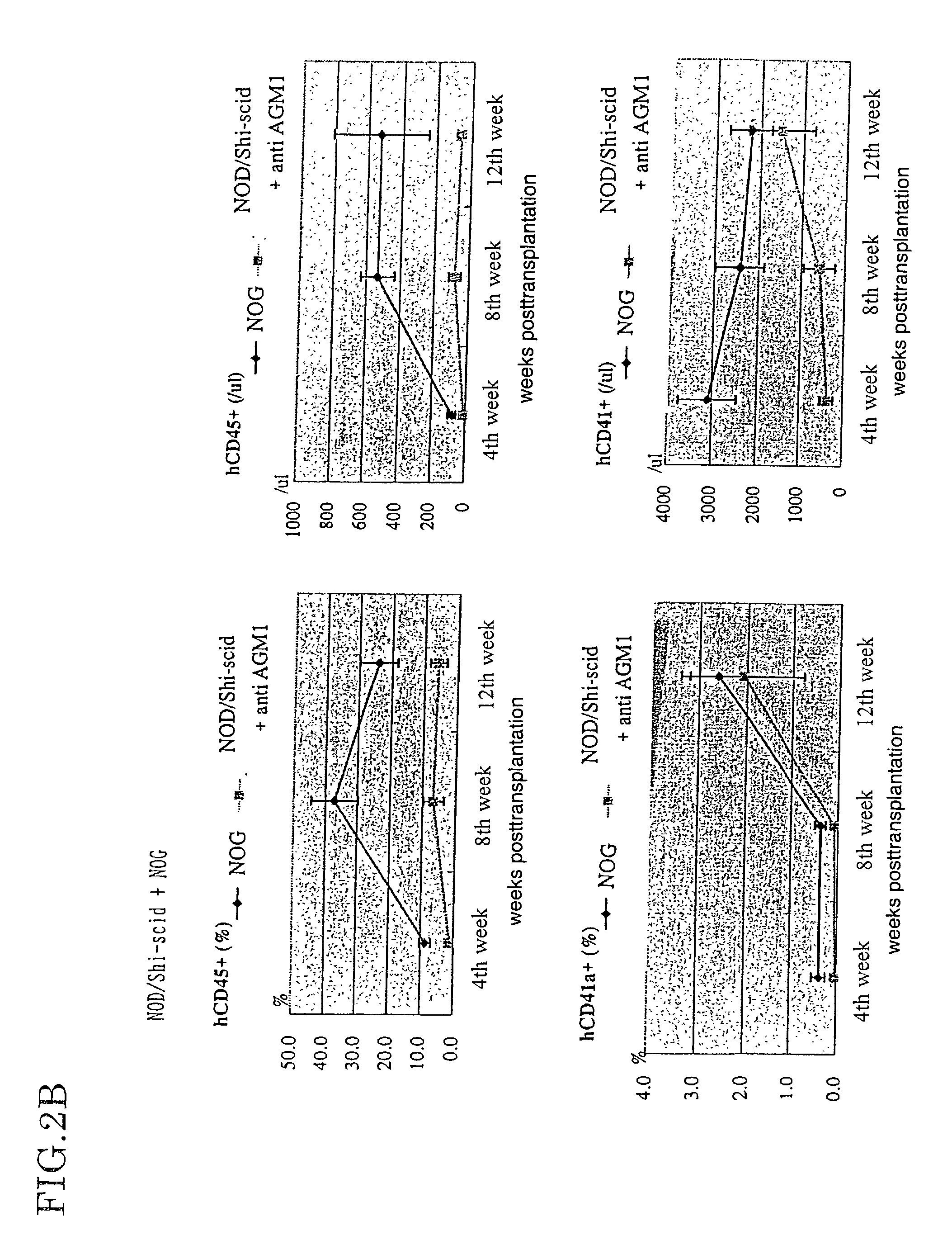Method of producing a mouse suitable for the engraftment, differentiation and proliferation of heterologous cells, mouse produced by this method and use of the mouse
a heterologous cell and mouse technology, applied in the field of mouse production, can solve the problems of high cost of antibodies and attach the degree of complexity, and achieve the effect of enhancing heterologous cell engraftmen
- Summary
- Abstract
- Description
- Claims
- Application Information
AI Technical Summary
Benefits of technology
Problems solved by technology
Method used
Image
Examples
example 1
Production of an Immunodeficient Mouse (NOG Mouse) with the Deletion of NK Activity and Declined Dendritic Cell Function, Examination of the Heterologous Cell Engraftment in the Mouse, and Establishment of an Assay System of Human Stem Cells Using the Mouse
(1) Production of an Immunodeficient Mouse (NOG Mouse) With the Elimination of NK Activity and Reduced Dendritic Cell Function
[0100]In order to obtain multifunctional immunodeficient mice with depleted NK activity, interleukin-2 receptor γ chain knockout mice (IL-2RγKO mice) (8 week-old) which were transferred from Prof. Kazuo Sugamura (Department of Microbiology and Immunology, Tohoku University, School of Medicine) were backcrossed with NOD-Shi-scid mice (8 week-old) which were kept in the Central Institute for Experimental Animals (also available from CLEA JAPAN, INC.), and thereby F1 mice having an IL-2Rγ mutant gene introduced thereinto were produced. The introduction of the mutant IL-2Rγ chain gene in the F1 mice was confirm...
example 2
Examinations on Functional Incompetence of Dendritic Cells of NOG Mice in NK Activity and Cytokine Production
[0140]Three female NOG mice (10 to 12 week-old) of the present invention, four female and four male NOD / Shi-scid mice (10 to 12 week-old) obtained by backcrossing C.B-17-scid mice with NOD / Shi mice, and two female and two male NOD / LtSz-scid, β2m null mice (10 to 12 week-old) (or referred to as null β 2m(null)NOD / LtSz-SCID, β2m microglobulin deficient NOD / SCID mice; produced by Dr. Shultz, L. D. et al. of The Jackson Laboratory Kollet O, Peled A, Byk T et al., beta2 microglobulin-deficient (β2m(null)NOD / SHI-SCID mice are excellent recipients for studying human stem cell function. Blood 2000;95(10):3102–5) were used for the following examinations.
[0141]After the NOD / Shi-scid mice were treated with anti asialo GM1 antibodies (αAGM), spleen cells were collected. The obtained cells were divided into two groups, and CD11c antigen positive cells (regarded as dendritic cells) were re...
example 3
Successive Transplant of Human Stem Cells Using NOG Mice
[0152]In order to examine self-replicability of gene-introduced human stem cells, umbilical cord blood stem cells were transplanted to NOG mice, and it was examined whether or not secondary or tertiary transplant is possible.
[0153]Umbilical cord blood was obtained from pregnant women, with their consent and approval, for use in tests. After mononuclear cells were isolated from umbilical cord blood using Ficoll-Hypaque (Lymphoprep, 1.077±0.001 g / ml; Nycomed, Oslo, Norway), CD34 positive cells were purified using a CD34 positive separation column (MACS, Miltenyi Biotec, Glodbach, Germany). The CD34 positive cells had a purity of 96±3%.
[0154]Lentivirus vector pCS-CG was a vector which enables a GFP gene to be expressed by a CMP promoter, and it was provided by Dr. Miyoshi (Immunology, Medical Branch, University of Tsukuba). After umbilical cord blood CD34 positive cells were cultured for 24 hours in serum-free medium StemPro TM-34...
PUM
| Property | Measurement | Unit |
|---|---|---|
| size | aaaaa | aaaaa |
| size | aaaaa | aaaaa |
| size | aaaaa | aaaaa |
Abstract
Description
Claims
Application Information
 Login to View More
Login to View More - R&D
- Intellectual Property
- Life Sciences
- Materials
- Tech Scout
- Unparalleled Data Quality
- Higher Quality Content
- 60% Fewer Hallucinations
Browse by: Latest US Patents, China's latest patents, Technical Efficacy Thesaurus, Application Domain, Technology Topic, Popular Technical Reports.
© 2025 PatSnap. All rights reserved.Legal|Privacy policy|Modern Slavery Act Transparency Statement|Sitemap|About US| Contact US: help@patsnap.com



